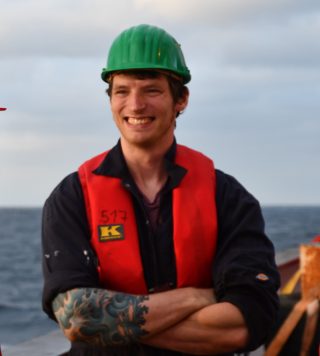
Abby and I have been through a lot in our seven years together. From the frigid cold-water coral reefs of the Arctic Circle to the very deepest part of the Mediterranean.
Recently, me and Abby have turned our sites to deep sea trenches and have explored the Kermadec, New Hebrides and now the Mariana trenches. Abby is a pet name I use because I know her very well. To everyone else she is the more formal “Oceanlab Abyssal Lander”.
Working in the deep
Her name comes from the abyssal zone; one of the ocean’s deepest areas, only superseded by the mighty hadal. She is capable of dives up to 6,000 m if you believe in things as restrictive as “operational limits”. Truth be told curiosity has, at times, gotten the better of us and she has dived more than 7,000 m.

When Abby settles, she hovers about 2 m off the seabed and takes still photographs of animals attracted with mackerel bait with a downward looking camera. This isn’t the best view of the fish, since fish can look pretty boring from above, but this reduces the effects of perspective. We are looking at a fixed amount of seabed and can reliably measure the fish using a scale bar that is also in the shot.

One of the most exciting/frustrating parts of lander work is that we know very little about what the lander is up to until it returns back to the ship. The best we can manage while the lander is at the seabed is communicating through sound, as mentioned in a previous blog.

When we are calling Abby back to the surface she is so far away from us that the coded signal we send takes some time to get through all the water. At the deeper sites it can take about eight seconds for the release’s reply to reach us. This allows us to calculate how far away that reply is coming from.
Trigonometry: All the cool kids are doing it
Put down your POGs, stickers, or whatever else the youth are into these days, and check this out. The scientists on Falkor are using trigonometry, you know, the stuff that never seemed relevant to real life. We know where we let the lander go and how far it is away from us by how long the sound takes to reach us. This allows us to track the lander, monitoring how far below us it is.

Once the lander is back on board, there are some tense moments. As the housing gets carefully cracked, there is a slight hiss of internal pressure; we are quick to mop up any beads of water. There it is, a humble little memory card. We load it into one of our computers and see hundreds of files. It’s worked! Clicking open one of the files, there is a very good chance that I will be the first to see something. That moment can be very powerful (powerful enough that a documentary crew once made me fake it… I won’t be winning any Oscars).

